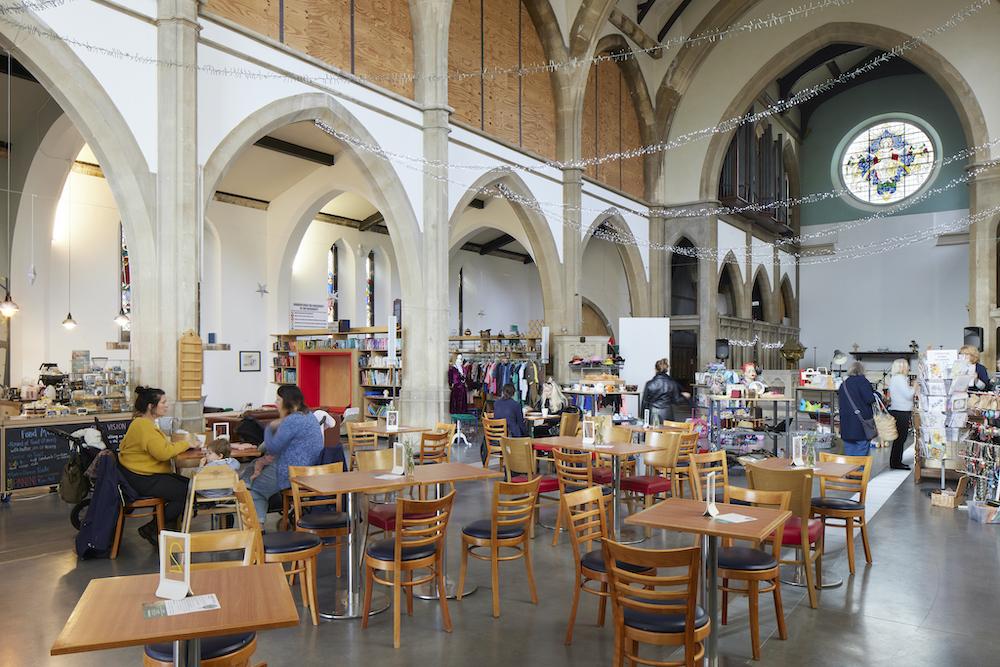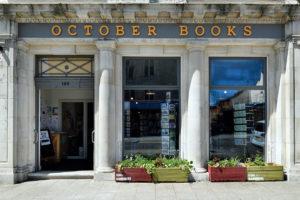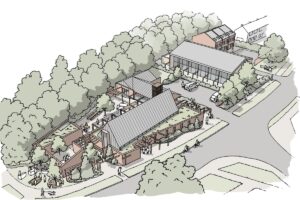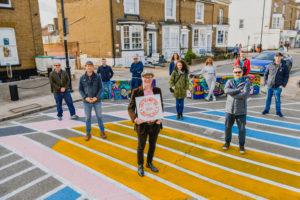As a design practice we are inherently interested in the idea of using architecture for positive change, we understand buildings and places can be specifically designed to support communities and improve a wider social context. As a practice we have had the pleasure of working on several schemes which have renovated existing properties, adapted buildings to fit changing needs and reimagined areas to create welcoming community spaces.
Designing for Community Projects

With regular attendance to Church falling steadily in the UK, according to the latest ‘Statistics for Mission 2022’ report by The Church of England the average weekly attendance has dropped from 854,000 people in 2019 to just 654,000 in 2022, we are finding that many church buildings are now facing a funding crisis. Many dioceses are now looking at new funding steams to help with the upkeep of these magnificent properties. As a practice we have been working with several churches to review their current property portfolio, to use architecture as a way to unlock the potential of the sites, to better suit the local needs and to once again make these buildings the cornerstone of their community.
We transformed St Margaret’s Church in Portsmouth, without having to undergo extensive and expensive building work to create a vibrant heart of the neighbourhood once again. The church building had been condemned before we were approached to review the possibility of reimagining the building, to use our design knowledge to increase congregation numbers and deliver support for all sectors of society of the local community.
Our key strategy was to introduce ‘meanwhile architecture’, a methodology through which an innovative strategy can be delivered incrementally, proactively getting the building used again as and when chunks of funding was available. Much of the ‘meanwhile’ fit out was created as flexible and movable pieces of furniture including cost effective plywood furniture units built on wheels to gives the interior layout endless flexibility, allowing the layout to easily be adapted to support all the community’s needs. Within the church us now has a busy café, well used food bank, soft play centre and cycle repair shop alongside the traditional church services, making the reinvigorated church is now thriving once again and used by all sectors of society across all seven days a week.
‘We took the decision to appoint the Studio BAD collective team rather than a more traditional church architect because we enjoyed the studio’s community focus & collaborative method of design. The team took the time to understand our vision, contributed to that vision & really engaged with all our activities. We particularly enjoyed the mix of practical, theoretical & hands on engagement, bringing life to plans & sections.’
– Fran Carabott, Lay Pioneer Minister
Sustainable Reuse of a Property

The traditional high street has seen many changes, as more retail and banking services are moving online. As designers we are seeing a rise in the need to reimagine urban centres and the commercial buildings, to offer properties a new lease of life. We believe that reusing the existing is the most sustainable approach, also reimagined structures can be more engaging that deliver richer schemes by offering a sense of history into a project.
Our October Books project redeveloped a beautifully grand Neo-Classical Victorian bank building in the Portswood area of Southampton. The established, independent bookshop set up a collaborative consortium with the homeless charity ‘The Society of St James’, to create a base for these two community focused ventures.
We reimagined the space to reactivate the old bank, for the good of the community. The design converted the ground floor of the former bank into a new book shop and community space, with the first and second floors converted to residential units for the homeless charity. We kept in quirky details from its former use to add a richness to the design, for example we keep the existing cash machine steel vault and encapsulated it within the shop counter.
Maximising an Existing Building

Occasionally reusing a property just doesn’t make financial sense and we need to look at how to maximise the potential of a site or building to support the community in a different way. We listen intently to determine exactly what our clients are looking to achieve, then put forward alternative suggestions that can maximise the site for the good of all.
At St Columba Church we hosted several focus community workshops and quickly understood it would be difficult to adapt the current building with the budget available to meet the expectations of the community, they needed the church to offer flexible space to host events, had a kitchen and washing facilities, is low energy to reduce the running costs and offers a welcoming and safe space to all.
By interrogating the site, it soon became apparent that there was space available to build a new, purpose-built church with modern methods of construction to deliver a low energy building that had the flexibility to meet the current needs and future needs of the local audience.
To raise the funds needed for this modern building, the funding would be unlocked by selling the existing church building which has been redesigned to create nine residential flats, with a shared internal communal space and a warden’s room to offer on-going support to the residence.
Community Design Workshop

As a design practice we understand the importance of hosting design workshops from an early stage with the local audience, to be inclusive in our design approach to deliver schemes which support social change and also create designs that celebrate the essence of a place.
When working on the pedestrianised area of Bedford Place in Southampton we worked with the whole community, business owners and local residence, hosting weekly meetings from the initial design concept stages, through the activation of the project to completion. This inclusive approach helped to shape the design by giving all those involved a voice, it also offered live feedback throughout to enhance the design. The project used low-cost temporary solutions, such as decorated concrete barriers, planters, outdoor seating and paint the road surfaces to enhance the closed roads to transform the space into a friendlier place for people in the community.
The project was originally only intended as a temporary solution to last a few months over the summer, but due to the success much of it has been kept in place, creating a vibrant backdrop to the artisan area of Southampton.
Get in touch to see how we can help you reimagine your community building or space.